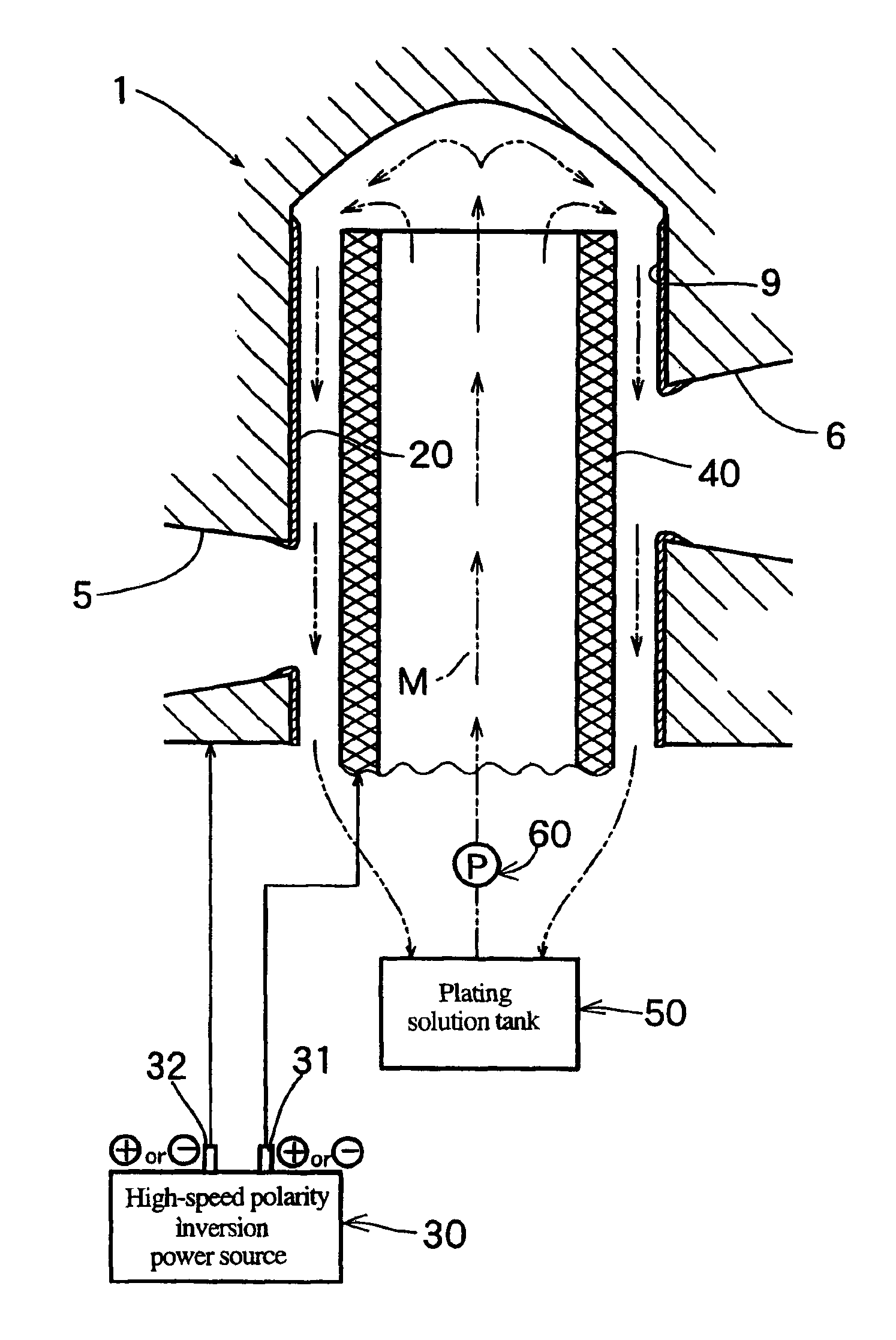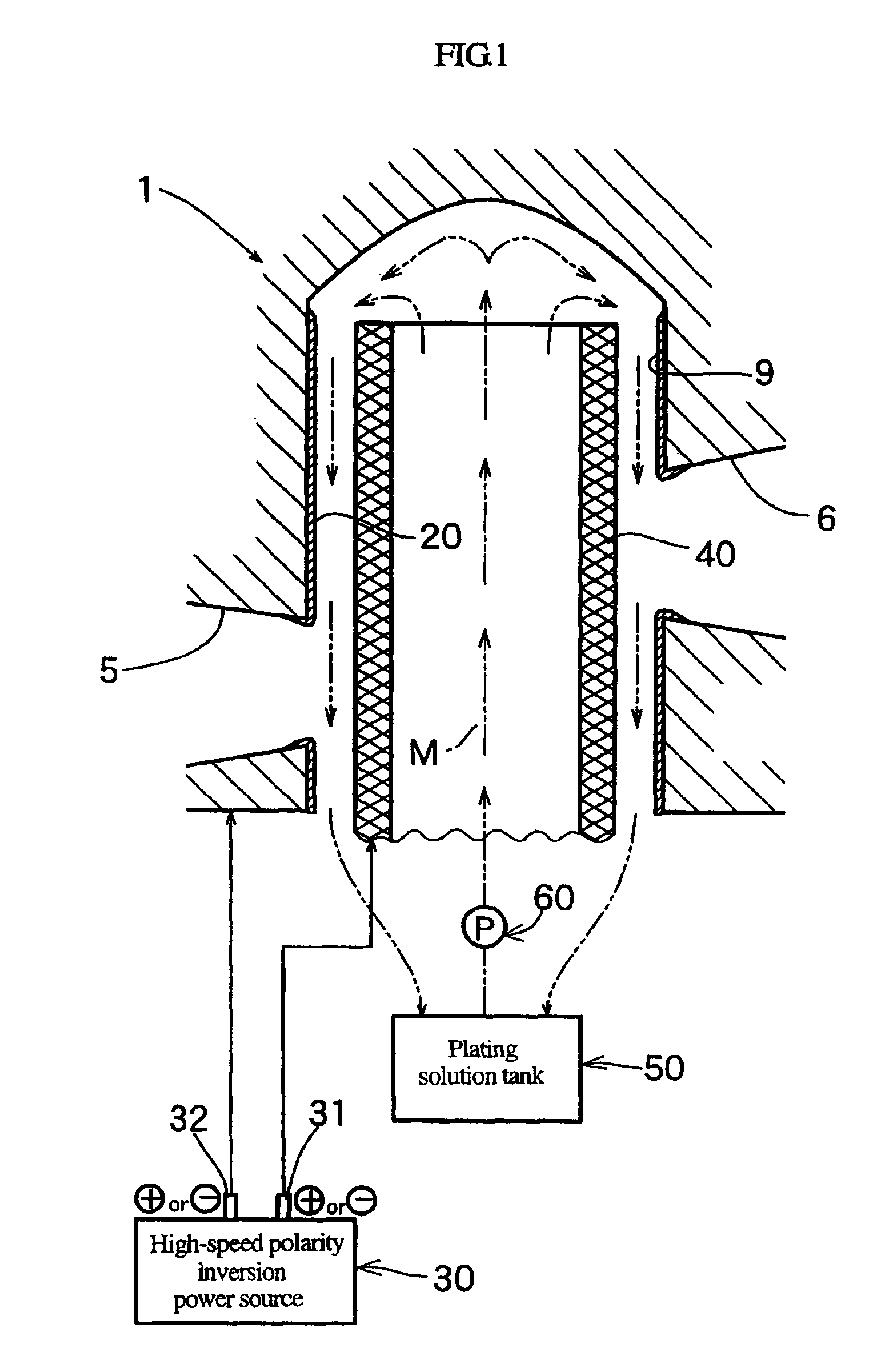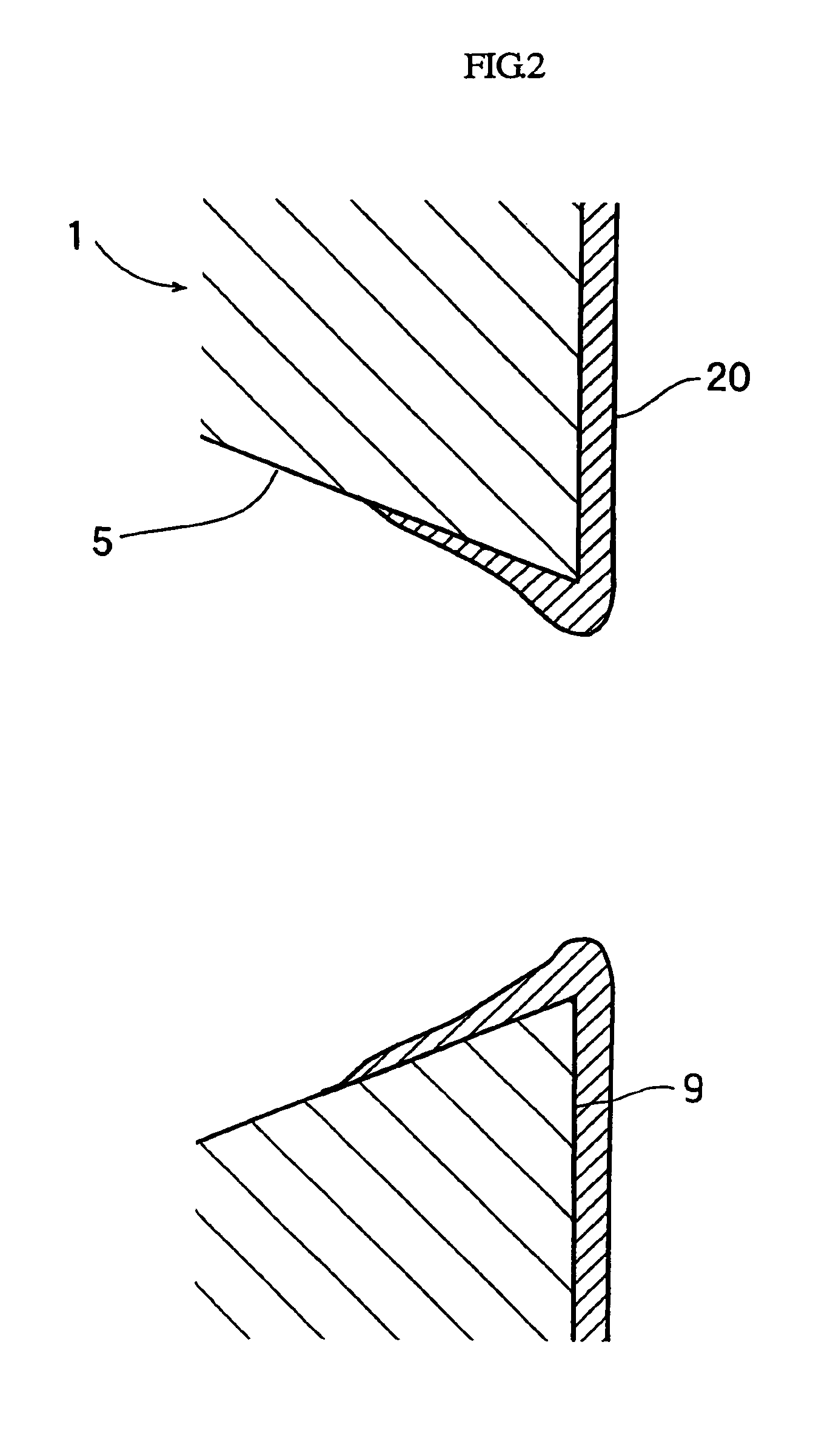Cylinder for internal combustion engine and method of treating inner surface of the cylinder
a technology of internal combustion engine and inner surface, which is applied in the direction of electrophoretic coating, machine/engine, refractive reflector, etc., can solve the problems of non-uniform thickness of plated layer, accompanied plating using dc power, and whisker-like protrusions, so as to promote uniformity and smoothing of plated layer
- Summary
- Abstract
- Description
- Claims
- Application Information
AI Technical Summary
Benefits of technology
Problems solved by technology
Method used
Image
Examples
Embodiment Construction
[0030]The present invention will be further explained with reference to one embodiment of a cylinder for an internal combustion engine according to the present invention.
[0031]The cylinder for an internal combustion engine according to the present invention is made of an aluminum alloy and is designed to be employed in a small air-cooled two-stroke gasoline engine which can be employed in a portable working machine such as a brush cutter, a chain saw, etc. As shown in FIG. 4 illustrating a longitudinal sectional view of the entire structure thereof, the cylinder 1 is constituted by an integral body consisting of a main body 2 provided with a pair of columnar protruded portions 2a disposed diametrally opposite to each other, a head portion 3 having a squish dome-shaped combustion chamber 4 formed therein, and a large number of cooling fins projecting from all over the outer wall of the integral body. Further, the head portion 3 is provided therein with an internal thread 18 for mount...
PUM
| Property | Measurement | Unit |
|---|---|---|
| thickness | aaaaa | aaaaa |
| time | aaaaa | aaaaa |
| time | aaaaa | aaaaa |
Abstract
Description
Claims
Application Information
 Login to View More
Login to View More - R&D
- Intellectual Property
- Life Sciences
- Materials
- Tech Scout
- Unparalleled Data Quality
- Higher Quality Content
- 60% Fewer Hallucinations
Browse by: Latest US Patents, China's latest patents, Technical Efficacy Thesaurus, Application Domain, Technology Topic, Popular Technical Reports.
© 2025 PatSnap. All rights reserved.Legal|Privacy policy|Modern Slavery Act Transparency Statement|Sitemap|About US| Contact US: help@patsnap.com



